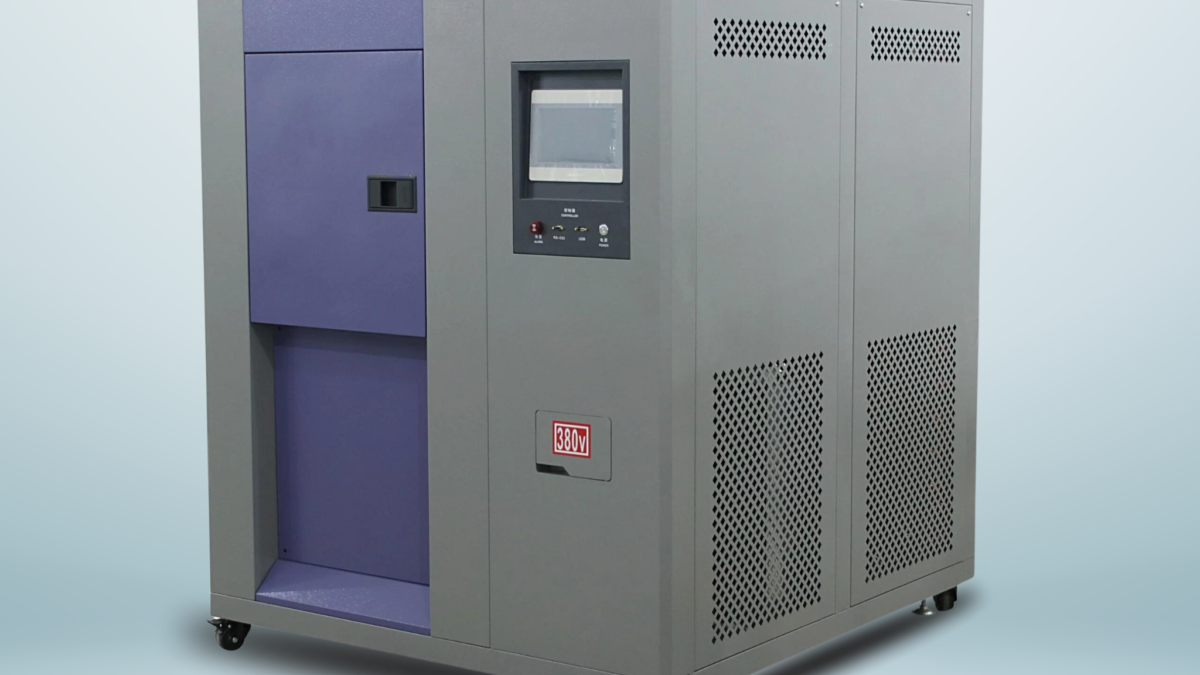High & Low Temperature Testing As per standard IEC 60068
Mastering Extreme Conditions: High & Low Temperature Testing as per IEC 60068
Introduction
- In today's highly competitive market, ensuring the resilience and performance of products under extreme environmental conditions is essential. One critical method used to assess durability is high and low temperature testing, conducted in accordance with the IEC 60068 standard. This international standard sets the guidelines for simulating temperature extremes, helping manufacturers test their products for performance, reliability, and longevity in a variety of environments.

What is High & Low Temperature Testing?
High and low temperature testing involves exposing products to extreme temperature conditions, both hot and cold, to evaluate how they perform and whether they maintain their structural integrity. This type of environmental testing is particularly useful for industries such as automotive, electronics, aerospace, and consumer goods, where products are often exposed to harsh conditions during their lifecycle.
The tests simulate the potential thermal environments products may encounter, whether it’s the freezing cold of winter or the scorching heat of industrial settings. Through temperature cycling, engineers can observe how materials and components react to these fluctuations, ensuring that products remain functional and safe under real-world conditions.
The Role of IEC 60068
IEC 60068 is an internationally recognized standard that specifies the methodology for environmental testing, including high and low temperature exposure. The standard is widely accepted across various industries, ensuring uniformity in testing practices and providing manufacturers with confidence that their products meet international quality and reliability standards.
Why is High & Low Temperature Testing Important?
Temperature extremes can cause significant stress to materials and components. Some materials expand and contract under these conditions, which may lead to warping, cracking, or changes in material properties over time. High and low temperature testing helps identify such vulnerabilities before products are released to market. The following are some of the primary benefits:
- Ensuring Safety and Reliability: Products tested under extreme temperature conditions are less likely to fail when used in harsh environments, providing peace of mind to both manufacturers and consumers.
- Enhancing Product Lifespan: Exposure to high and low temperatures can degrade materials over time. Testing helps manufacturers design products that can withstand these effects, increasing their durability and service life.
- Compliance with International Standards: Meeting the IEC 60068 standard ensures that products are tested according to globally accepted procedures, making it easier to enter international markets with confidence.
Key Aspects of IEC 60068 Testing
High and low temperature testing under IEC 60068 follows a systematic approach to ensure thorough evaluation of a product’s performance. The key aspects of this testing include:
- Temperature Range: Products are exposed to both high and low temperatures, which can vary based on the industry and the product’s intended application. For example, automotive components might be tested from -40°C to +85°C to simulate both winter and summer conditions.
- Temperature Cycling: The testing procedure often includes cycles between extreme high and low temperatures, simulating the real-world temperature variations a product may encounter during use. The number of cycles and the ramp rate—how fast the temperature changes—are critical parameters in this process.
- Dwell Time: Products are held at the extreme temperatures for a specified period (dwell time) to observe their behavior and potential degradation over time.
- Monitoring and Measurement: Throughout the testing, critical properties such as mechanical integrity, electrical performance, and material deformation are monitored. Any cracks, warping, or functional failures are recorded to assess the product’s overall durability.
Industries that Benefit from Temperature Testing
1. Automotive: Vehicles are exposed to a wide range of temperatures during operation, from the freezing cold of winter to the intense heat of summer. High and low temperature testing ensures that automotive components such as engines, electronics, and batteries can withstand these temperature variations without failure.
2. Electronics: Consumer electronics like smartphones, laptops, and home appliances must maintain performance despite temperature fluctuations. By simulating high and low temperature environments, manufacturers can ensure that their devices will perform consistently, whether in cold storage or under the heat of direct sunlight.
3. Aerospace: Aircraft components face significant temperature extremes during flight, particularly at high altitudes. Temperature testing ensures that materials used in aircraft construction maintain their integrity in the face of extreme cold and heat, ensuring passenger safety and equipment reliability.
4. Industrial Equipment: Heavy machinery and industrial tools often operate in harsh environments where extreme temperatures are a concern. Ensuring that these machines perform well under such conditions is critical for the safety of workers and the continuity of operations.

Conclusion: Building Better Products with IEC 60068
- High and low temperature testing as per IEC 60068 is a crucial tool for industries that require their products to withstand extreme environmental conditions. Whether it's ensuring that a smartphone operates flawlessly in sub-zero temperatures or that an aircraft's components remain reliable at high altitudes, temperature testing guarantees that products can handle the rigors of real-world use.

